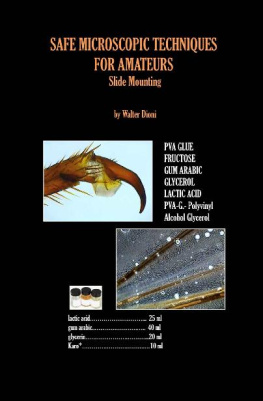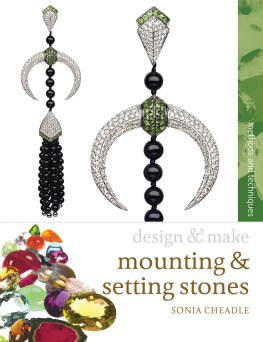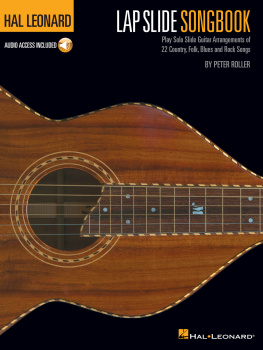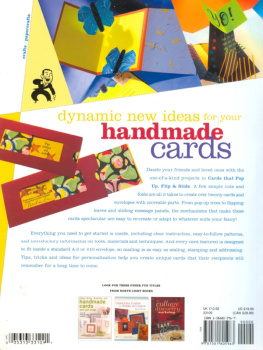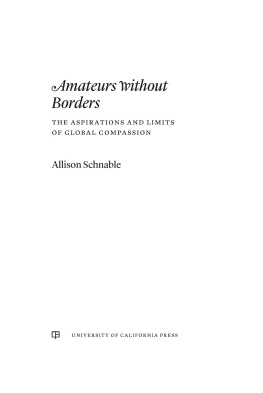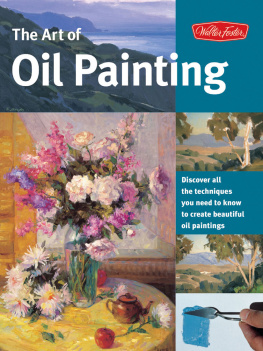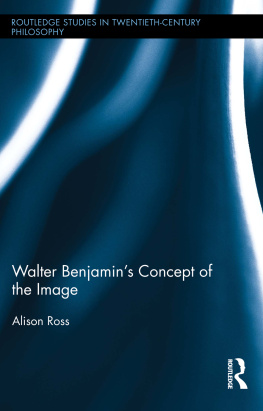Walter Dioni [Dioni - SAFE MICROSCOPIC TECHNIQUES FOR AMATEURS Slide Mounting
Here you can read online Walter Dioni [Dioni - SAFE MICROSCOPIC TECHNIQUES FOR AMATEURS Slide Mounting full text of the book (entire story) in english for free. Download pdf and epub, get meaning, cover and reviews about this ebook. year: 2014, genre: Science. Description of the work, (preface) as well as reviews are available. Best literature library LitArk.com created for fans of good reading and offers a wide selection of genres:
Romance novel
Science fiction
Adventure
Detective
Science
History
Home and family
Prose
Art
Politics
Computer
Non-fiction
Religion
Business
Children
Humor
Choose a favorite category and find really read worthwhile books. Enjoy immersion in the world of imagination, feel the emotions of the characters or learn something new for yourself, make an fascinating discovery.
- Book:SAFE MICROSCOPIC TECHNIQUES FOR AMATEURS Slide Mounting
- Author:
- Genre:
- Year:2014
- Rating:3 / 5
- Favourites:Add to favourites
- Your mark:
- 60
- 1
- 2
- 3
- 4
- 5
SAFE MICROSCOPIC TECHNIQUES FOR AMATEURS Slide Mounting: summary, description and annotation
We offer to read an annotation, description, summary or preface (depends on what the author of the book "SAFE MICROSCOPIC TECHNIQUES FOR AMATEURS Slide Mounting" wrote himself). If you haven't found the necessary information about the book — write in the comments, we will try to find it.
Walter Dioni [Dioni: author's other books
Who wrote SAFE MICROSCOPIC TECHNIQUES FOR AMATEURS Slide Mounting? Find out the surname, the name of the author of the book and a list of all author's works by series.
SAFE MICROSCOPIC TECHNIQUES FOR AMATEURS Slide Mounting — read online for free the complete book (whole text) full work
Below is the text of the book, divided by pages. System saving the place of the last page read, allows you to conveniently read the book "SAFE MICROSCOPIC TECHNIQUES FOR AMATEURS Slide Mounting" online for free, without having to search again every time where you left off. Put a bookmark, and you can go to the page where you finished reading at any time.
Font size:
Interval:
Bookmark:
Unless you try to do something beyond what you have already mastered, you willnever grow.
Ralph Waldo Emerson
ONVIEW BOOKS
SAFE MICROSCOPIC TECHNIQUES
FOR AMATEURS
Registered Office:
Frilford Mead, Kingston Road, Frilford. Abingdon. Oxfordshire. OX13 5NX England
Copyright Walter Dioni and Alicia DioniAll rights reserved.
All proceeds for sales go to Walters family in Mexico.Visit: www.microscopy-uk.org.uk/wd/
The moral right of the author has been asserted.Many thanks to David Walker for proof-reading this book and forMol Smith in compiling and editing the articles.
This book is sold subject to the condition that it shall not, by wayof trade or otherwise, be lent, re-sold, hired out, or otherwise circulated without the publishers prior consent in any form
or binding or cover other than that in which it is published and without a similar condition including this conditionbeing imposed on the subsequent purchaser.
First Published 2014 by (Onview Books) Onview.net Ltd.A CIP catalogue record for this book isAvailable. See cover for ISBN.by Walter Dioni
From 2002 to 2011 Walter Dioni, living in Mexico, has shared over 60often heavily illustrated articles in Micscape Magazine(www.microscopy-uk.org.uk) on a wide range of topics. They illustrate the breadth of his interests, his love of microscopic life and encouragement to others to use the microscope as a study tool. Englishis not Walter's first language, so its especially impressive to witness him share technical topics in such a clear manner. All credit to him tosustain such effort in an attempt to share his knowledge freely with people around the world.
Since the 1990s, it has become increasingly difficult to obtain the types of chemicals used to preserve, treat, and mount specimens ofmicroscopic life onto specimen slides for long term study. The increasing pressure of society to protect its young people from any formof risk, and the increasing reluctance of shipping services to handleanything deemed as slightly dangerous, has undermined enthusiastmicroscopy as a practical past-time. Other pressures are prevalent with the increasing attraction in young people to spend their spare timeplaying computer games and immersing themselves into virtual digitalworlds.
Walters work here seeks to re-enable specimen treatment and mounting through the use of chemicals and materials easy to sourcelocally and considered safer than the more volatile but extremelyefficient chemicals used in the past. The work will prove useful for expert, novice, and practiced enthusiast where they might wish to createslides of their own. Note: other Micscape authors and contributorshave added to Walters work and also included where appropriate in thisbook or references are provided to online articles.
At the time of writing (May 21st 2014), Walter is very ill inhospital in Mexico with lung cancer. Aged eighty-four, the prognosis for survival is very poor. This news prompted the creation of this bookby the microscopy-uk and Micscape founders with an aim and hope to preserve the memory as well as the knowledge of a very intelligent and compassionate human-being. All proceeds obtained by the sale of this book will be sent to his surviving children in Mexico by way of his eldest daughter, Alicia.
Mol Smith (co-founder of Micscape Magazine)www.microscopy-uk.org.uk CONTENTS
Chapter 1- Introduction Liquid Media 6 Chapter 2 - Solidifying Media 26Chapter 3 - The mixed formulae44
Chapter 4 - The Glycerin Jellies72
Chapter 5 - Ten Years After. 82
Chapter 6 - Finale98
Editors Note
As editor, I acknowledge the somewhat lack of a proper indexingsection for this work, which is due to combining a number of web based articles into a coherent work. Unfortunately, the method chosen and the resources at our disposal did not allow for a more detailed contents andindexing system to be included. We also wished to complete the work within a very short time-frame as the author is very ill and it was our wish for him to see the book in print as soon as possible.
Note on transcription of web articles to printed form: Transfer of640x480 pixel images in the earlier web articles to high dpi print formatinevitably causes some quality loss and the reader should bear this inmind. Also monochrome versions of this book lose the colourinformation but does reduce costs considerably.
The hyperlinking to other material in the original web formatarticles are also lost in the printed formats. Readers are advised to visit the full web suite of articles at the link above to follow any references. I do hope this does not detract from the highly useful content.
Mol Smith.
Fly wing image - It is a mosaic of four different pictures. A picture takenwith the x40 objective of the encircled area would be used as a test of the behaviour for the different mounting media described below.
MOUNTING MICROSCOPIC SUBJECTS. Chapter 1 Introduction Liquid MediaIntroduction
In a research histology laboratory, or a pathology laboratory, mounting is the last procedure in the series that ends with a permanent histologicalpreparation on the table, well after the:
1) fixing
2) paraffin embedding
3) sectioning
4) staining
5) dehydrating
6) clearing operations
Leaving aside some exceptions, amateurs rarely engage in researchthat needs long and complicated histological techniques. Most of theirwork is made on live material. Though at times, many of them may needor want to preserve some materials for future study, or to make a comparative collection of samples, or to see cytological detail such as a cell nucleus.
After some preliminary treatments they would like to mount the objects or organisms as semi-permanent or even permanent preparations.
Normally they manipulate whole organisms or parts dissected fromthem and many times microscopists mount their critters withoutstaining. Some subjects can even be mounted without any previousmanipulation at all, especially if they are dry objects. In this series on microscopic techniques, this makes the study of mounting media easier and useful, reversing what would be the usual presentation schedule.
Canada balsam.- The standard mountant for histology, and also fortaxonomy, be it zoological or botanical, is Canada balsam, a now scarce and very expensive natural resin. This is prepared by collecting the resinexuded by Abies balsamica (the balsam fir) and diluting it in solvents (many of which are now considered toxic e.g. xylene).
From experience to date, Canada balsam mounted preparations last over a century. As Canada balsam does not mix with water, mounting init implies the use of a sequence of dehydration, starting with low grade alcohols, followed by high grade alcohols, absolute alcohol, mixed clearing agents plus alcohol, clearing agents, clearing agents mixed withxylene, pure xylene, and balsam dissolved in xylene, toluene or benzene could be used instead of xylene.
But all three solvents are equally toxic and dangerous: xylene, toluene, and benzene. The development of some synthetic media assubstitutes for balsam dont solve the problem, they are proprietary trade marks, equally expensive, that need the same steps, and use thesame (toxic) solvents. There are less toxic and less dangerousproprietary substitutes but they are expensive.
Next pageFont size:
Interval:
Bookmark:
Similar books «SAFE MICROSCOPIC TECHNIQUES FOR AMATEURS Slide Mounting»
Look at similar books to SAFE MICROSCOPIC TECHNIQUES FOR AMATEURS Slide Mounting. We have selected literature similar in name and meaning in the hope of providing readers with more options to find new, interesting, not yet read works.
Discussion, reviews of the book SAFE MICROSCOPIC TECHNIQUES FOR AMATEURS Slide Mounting and just readers' own opinions. Leave your comments, write what you think about the work, its meaning or the main characters. Specify what exactly you liked and what you didn't like, and why you think so.

